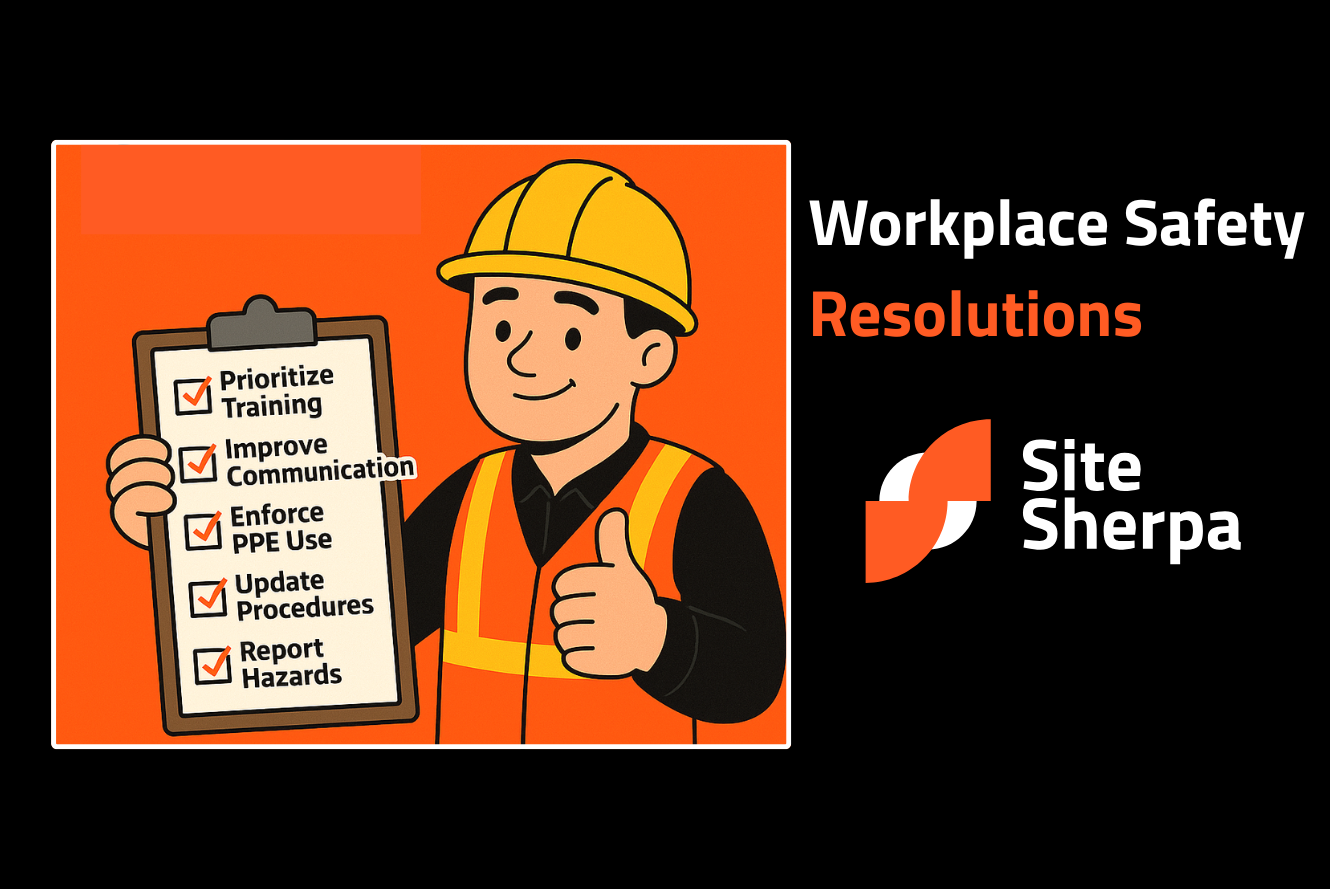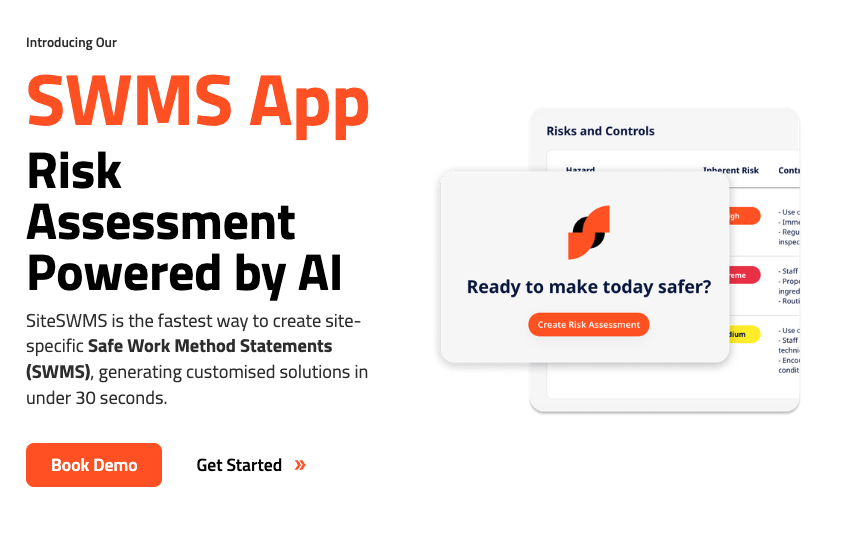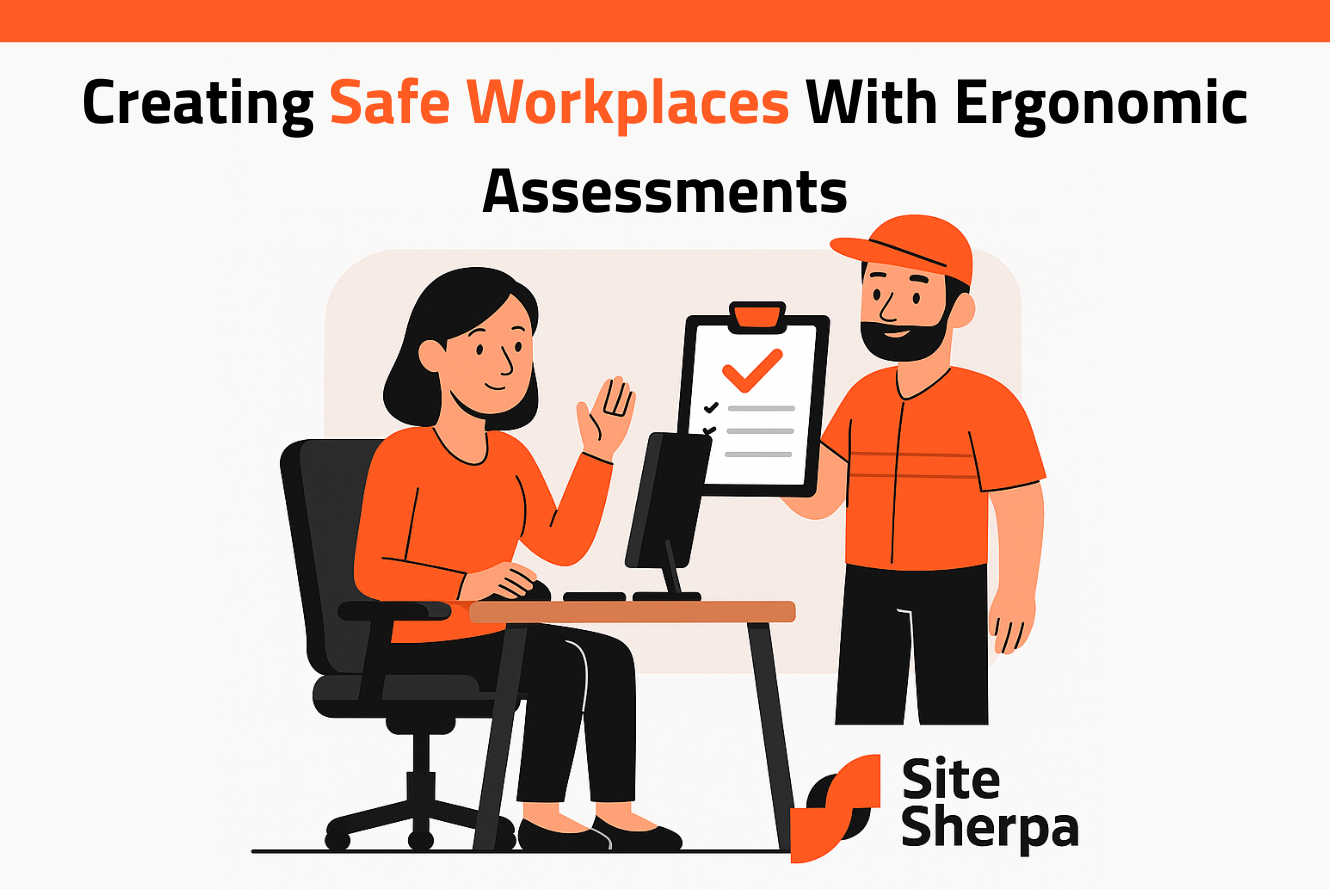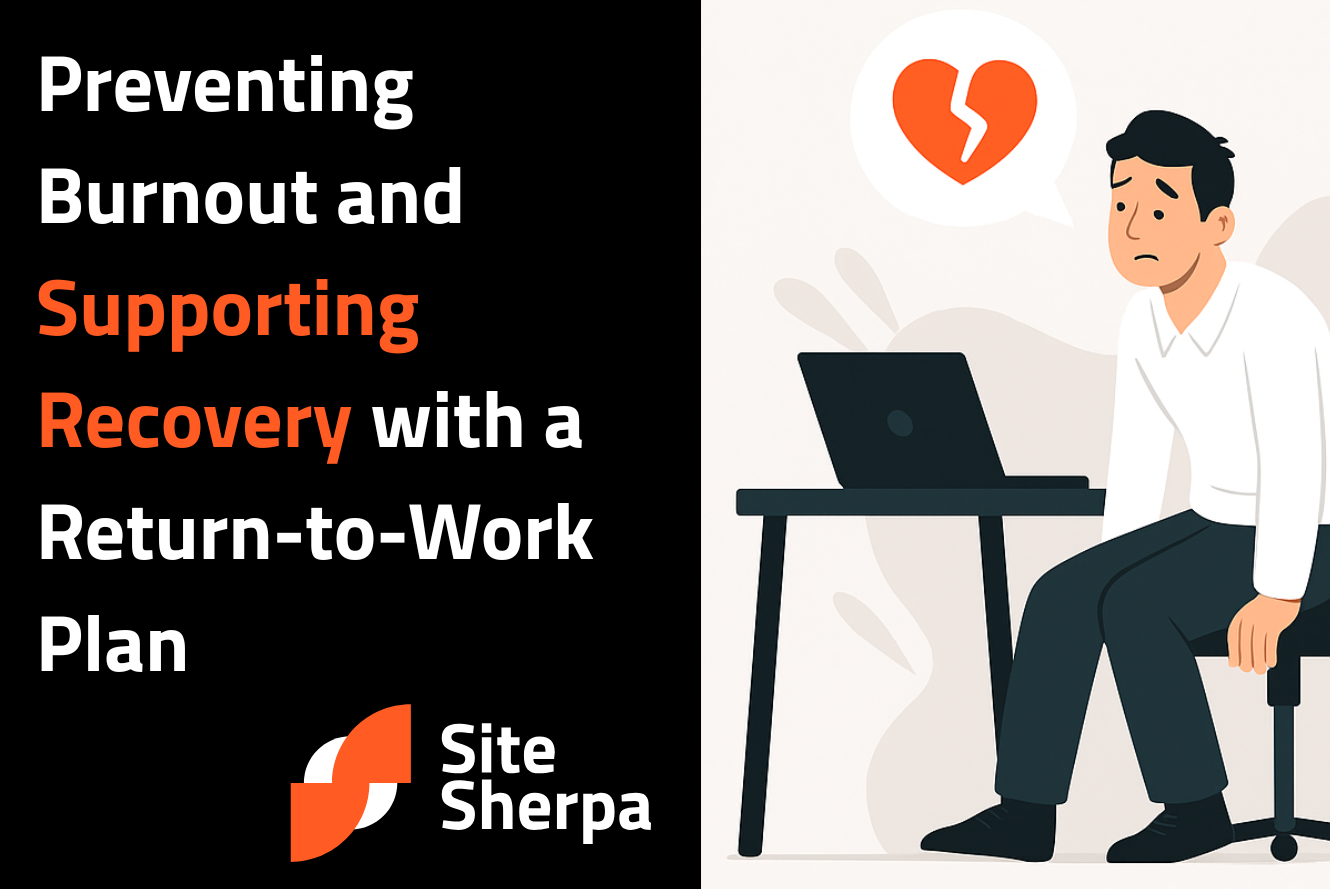A Guide to SWMS Templates: Streamlining Workplace Safety
How SWMS templates help organisations manage risk, comply with the law, and protect workers.
When it comes to high-risk activities, workplace safety must be more than a checklist, it needs to be a structured, documented system that protects workers and ensures compliance. One of the most widely used tools in this space is the Safe Work Method Statement, commonly known as a SWMS.
Creating a Safe Work Method Statement from scratch can be daunting. That’s why many organisations rely on an SWMS template, which provides a structured format for documenting hazards, risks, and controls. In this article, we’ll explore what a SWMS is, why templates are valuable, how to use them effectively, and how they fit into broader safety management systems.
What Is a SWMS?
A Safe Work Method Statement (SWMS) is a formal document that outlines how specific high-risk construction or work activities will be carried out safely. It identifies the hazards associated with the work, assesses the risks, and sets out the measures that will be implemented to control those risks.
Typical features of a SWMS include:
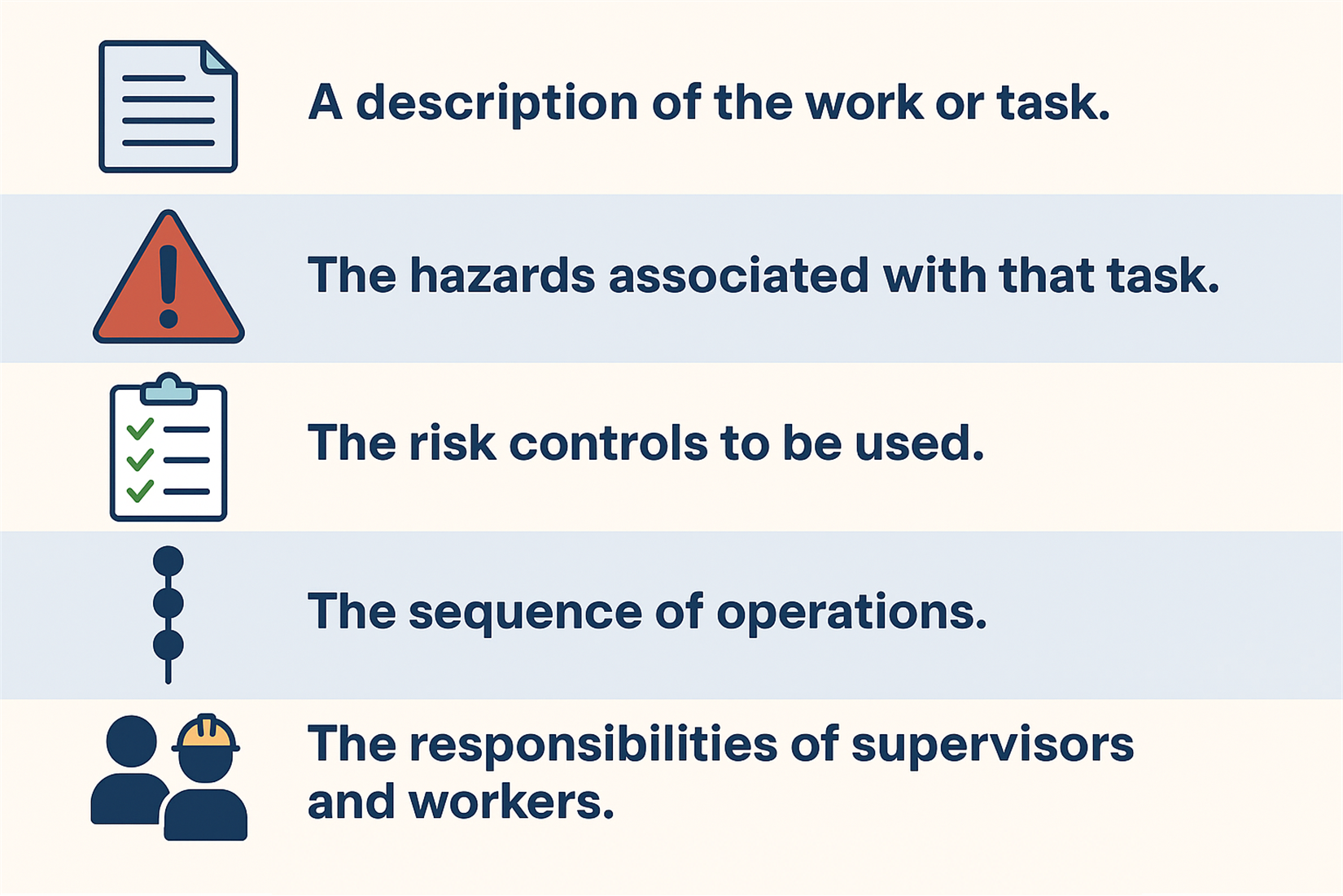
A SWMS is not just a bureaucratic requirement. It is a practical document that helps workers understand their roles, ensures compliance with legislation, and promotes safer workplaces.
Why Are SWMS Important?
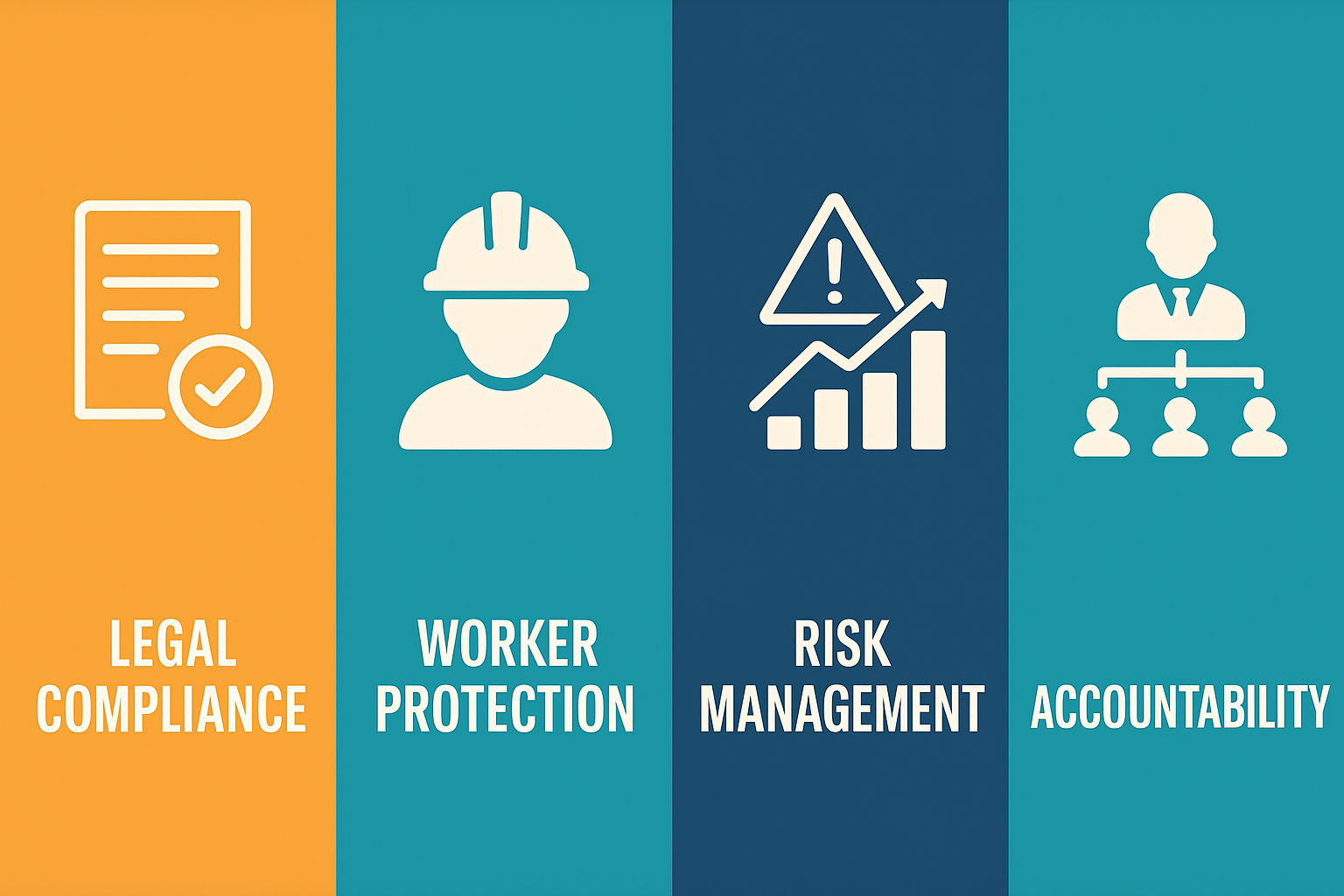
1. Legal Compliance
In Australia, the Work Health and Safety (WHS) Regulations 2011 require a SWMS for high-risk construction work. Similar requirements exist under OSHA in the United States and the Health and Safety Executive (HSE) in the UK. Without one, organisations risk fines, legal action, and reputational damage.
2. Worker Protection
SWMS provide clear instructions to workers, ensuring they understand potential hazards and the controls in place. This reduces incidents, injuries, and fatalities.
3. Risk Management
By documenting hazards and control measures, SWMS reduce guesswork and ensure consistency across worksites.
4. Accountability
Clearly assigned responsibilities help prevent confusion and ensure compliance with safe work practices.
What Is an SWMS Template?
An SWMS template is a pre-formatted document that provides a standardised structure for creating a Safe Work Method Statement. Instead of starting from scratch, organisations can use a template to ensure all required information is included and formatted correctly.
Templates are particularly useful because:

A good SWMS template can be adapted to suit specific industries, tasks, or sites.
Key Components of an SWMS Template
Although designs may vary, most SWMS templates include the following sections:

- Project Details
- Project name, location, date, and scope of work.
- Work Activity Description
- A clear explanation of the task being undertaken.
- Hazard Identification
- Listing potential hazards such as falls, electrocution, or chemical exposure.
- Risk Assessment
- Analysing the likelihood and consequence of each hazard.
- Control Measures
- Hierarchical controls: elimination, substitution, engineering, administrative, and PPE.
- Step-by-Step Work Procedure
- Detailed sequence of activities with associated risks and controls.
- Roles and Responsibilities
- Identifying supervisors, workers, and contractors responsible for implementing controls.
- Training and Competency Requirements
- Ensuring workers are qualified and trained for the tasks.
- Emergency Procedures
- Outlining steps for responding to accidents, fire, or medical emergencies.
- Review and Approval
- Sign-off from supervisors, safety officers, and workers.
How to Use an SWMS Template Effectively

Step 1: Customise the Template
Adapt the SWMS template to your specific task or project. Generic documents are often too broad to be useful.
Step 2: Involve Workers
Consult workers and supervisors when filling in the SWMS. They often know the hazards and risks best.
Step 3: Keep It Simple
Avoid unnecessary jargon. The SWMS must be easy to read and understand.
Step 4: Make It Accessible
The SWMS should be available on-site at all times and explained to workers before work begins.
Step 5: Review Regularly
Update the SWMS when conditions change, such as new equipment, weather, or personnel.
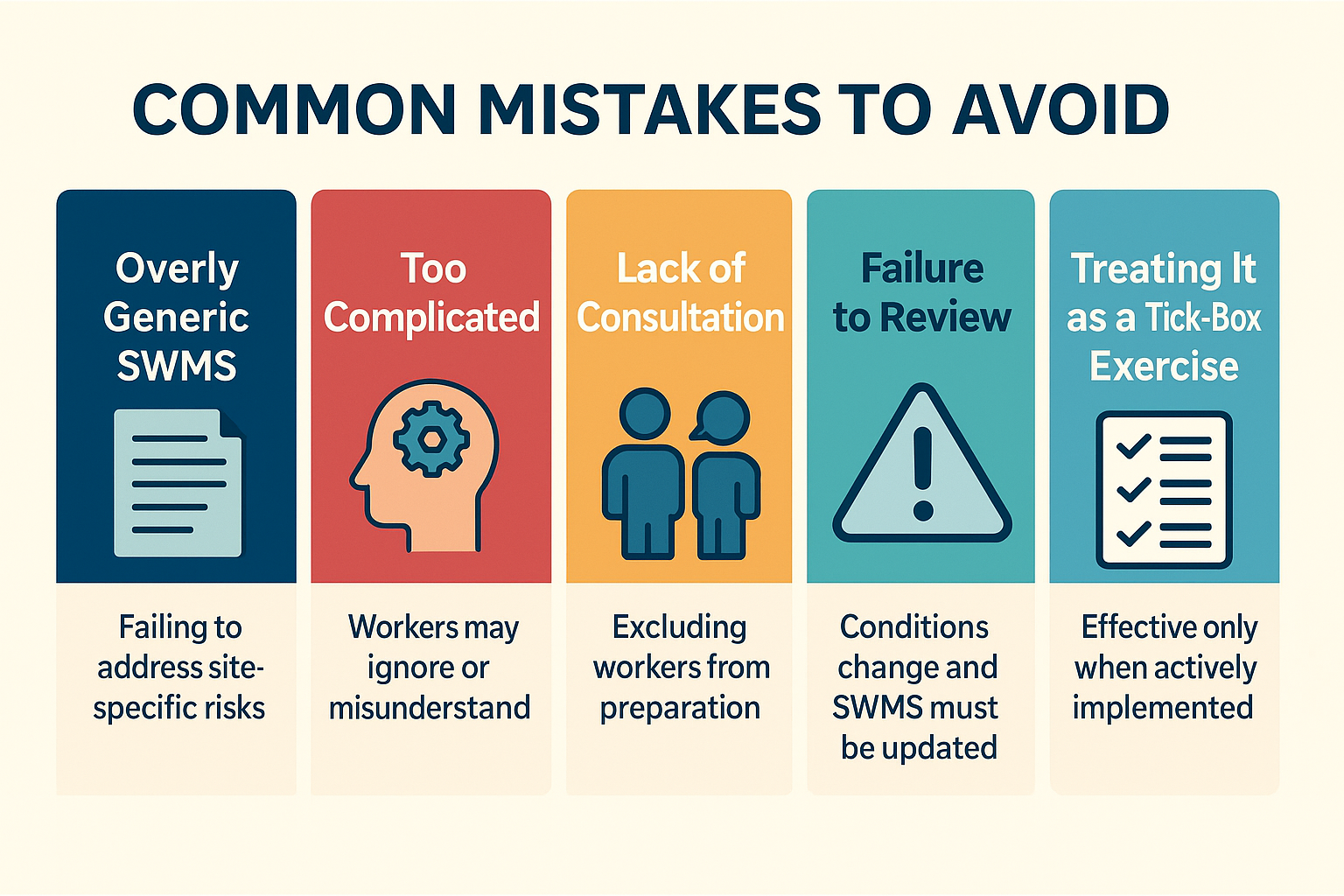
Industries That Rely on SWMS Templates
Construction
By law, SWMS are required for high-risk activities such as working at heights, demolition, and asbestos removal.
Mining
Mining involves confined spaces, heavy machinery, and explosives—all requiring task-specific SWMS.
Manufacturing
Tasks like machine maintenance, chemical handling, and confined space entry benefit from structured SWMS.
Logistics and Warehousing
Forklift use, manual handling, and loading/unloading activities are safer with documented procedures.
Energy and Utilities
Work on electrical systems, pipelines, or at heights must be supported by detailed SWMS.
Case Study: Using SWMS Templates in Construction
A mid-sized construction company was experiencing high incident rates related to falls from heights and electrical hazards. Leadership introduced a standardised SWMS template across all projects.
Actions Taken:
- All supervisors trained on completing task-specific SWMS.
- Workers consulted to identify site hazards.
- SWMS documents made available digitally on tablets.
- Daily pre-start meetings included a review of the relevant SWMS.
Outcomes:
- Incident rates dropped by 45% in one year.
- Workers reported increased confidence in safety management.
- Insurance premiums decreased due to fewer claims.
This case highlights how adopting a simple but effective tool can transform workplace safety.
Digital SWMS Templates: The Future of Safety Documentation
While paper-based templates remain common, many organisations are moving to digital platforms.
Digital SWMS templates offer advantages such as:
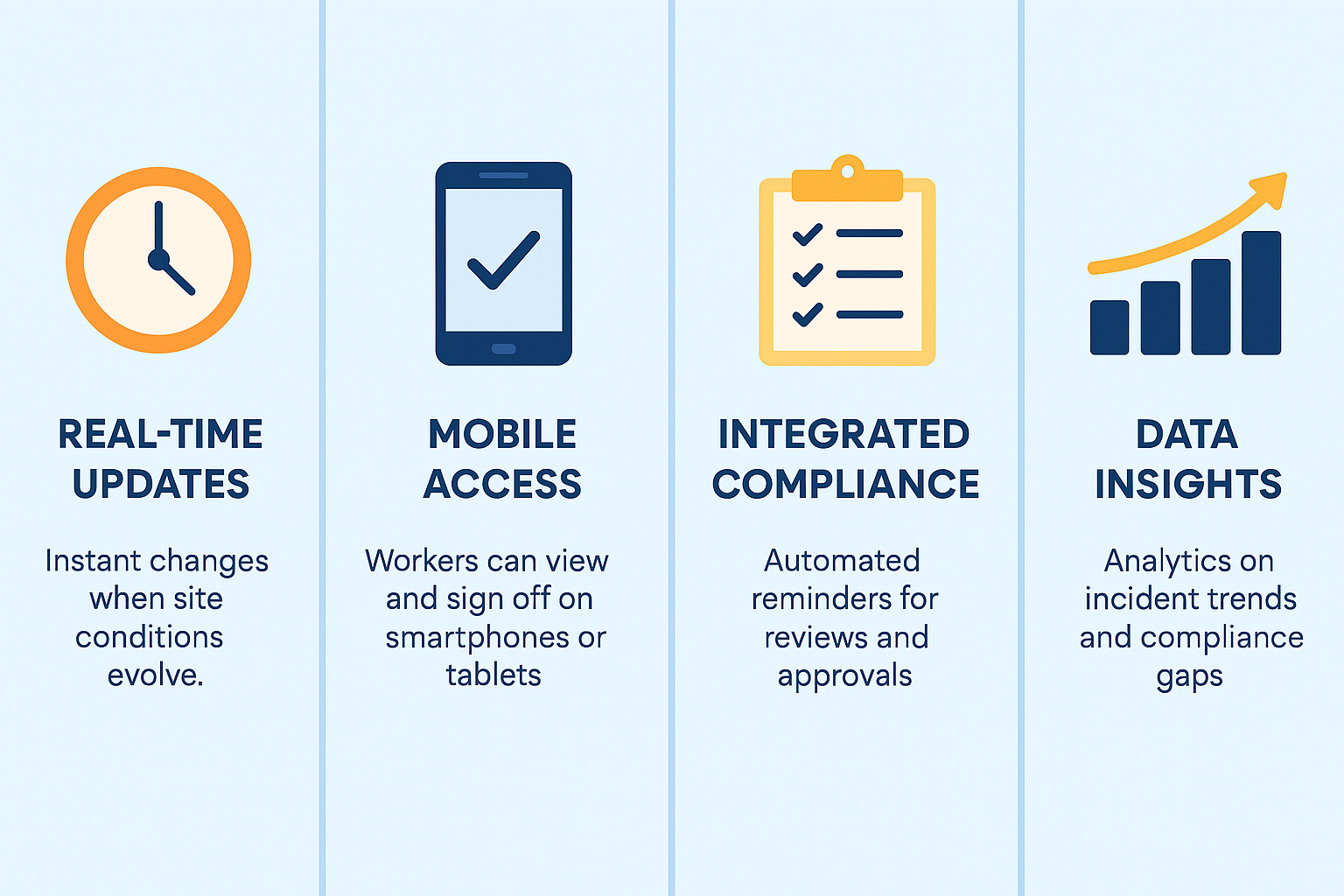
By embracing digital tools, organisations can make SWMS easier to use, monitor, and enforce.
Training and Competency for SWMS Use
For SWMS templates to be effective, workers need training on:
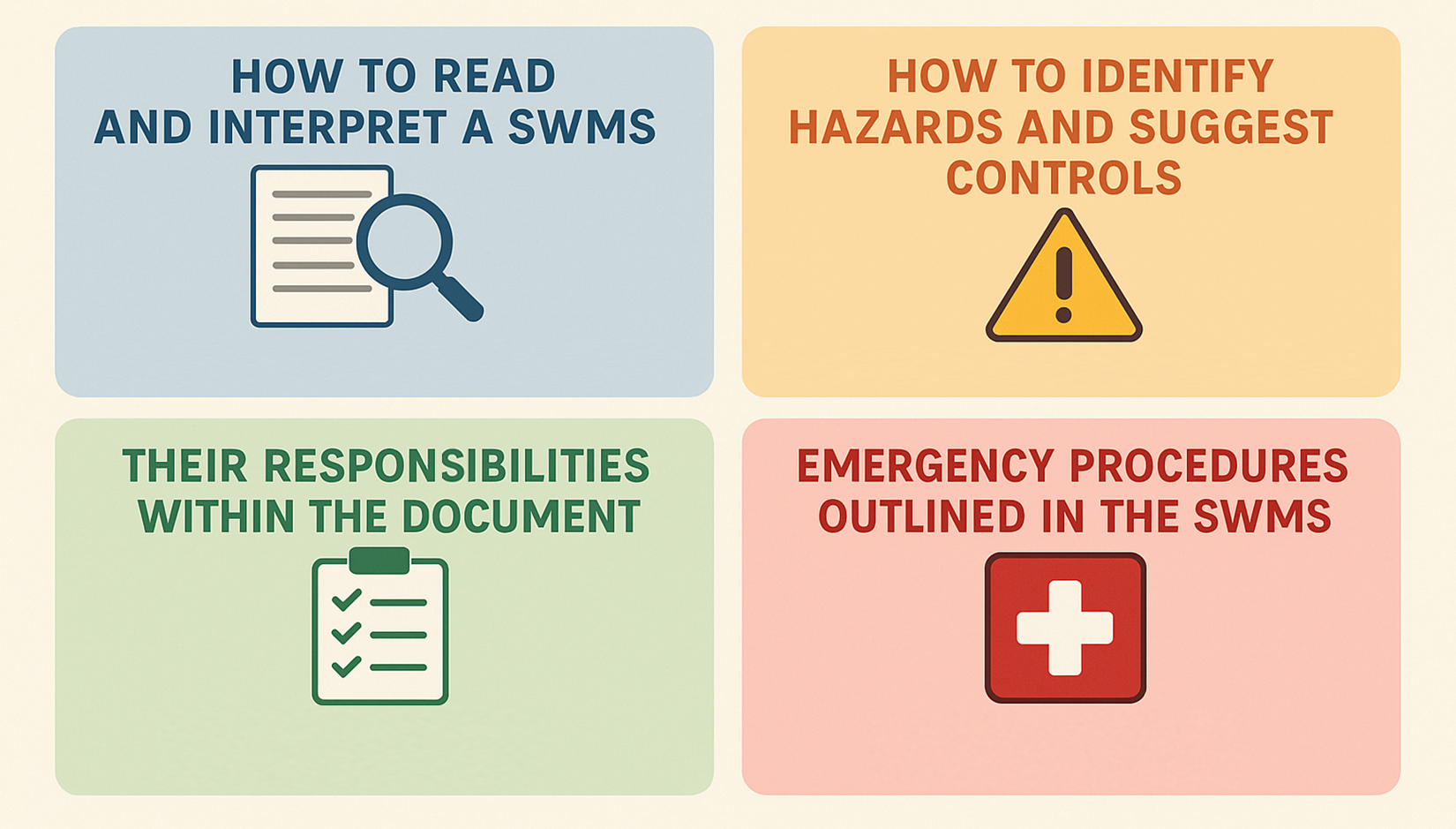
Supervisors must also be trained in preparing, reviewing, and enforcing SWMS.
Best Practices for SWMS Implementation

1. Tailor Templates to Tasks
Don’t rely on generic documents—make them task-specific.
2. Involve All Stakeholders
Workers, supervisors, and safety officers should all contribute.
3. Focus on Practical Controls
Ensure controls are realistic and achievable in practice.
4. Make It a Living Document
Regularly update and review as work progresses.
5. Integrate with Safety Management Systems
Link SWMS to broader risk assessments, training, and incident reporting.
Future Trends in SWMS and Templates

Conclusion
A Safe Work Method Statement is one of the most important documents in high-risk industries. It provides a practical framework for identifying hazards, implementing controls, and protecting workers.
An SWMS template simplifies the process, ensuring consistency, compliance, and efficiency. When tailored to specific tasks and combined with worker consultation, it becomes more than a formality, it becomes a critical safety tool that prevents incidents and saves lives.
As workplaces embrace digital tools, the future of SWMS lies in smarter, more accessible templates that integrate seamlessly into broader safety management systems. For organisations, the challenge is not just to have SWMS templates but to use them meaningfully engaging workers, updating them regularly, and making safety a shared responsibility.
By doing so, businesses not only comply with the law but also create safer, more productive workplaces where every worker goes home unharmed.
Related Content
Join Our Newsletter
Receive expert insights, safety updates, and the latest updates in our services and apps. Stay ahead of workplace safety, compliance, and operational efficiency delivered straight to your inbox.

.png)
.png)
.png)
.png)
.png)

